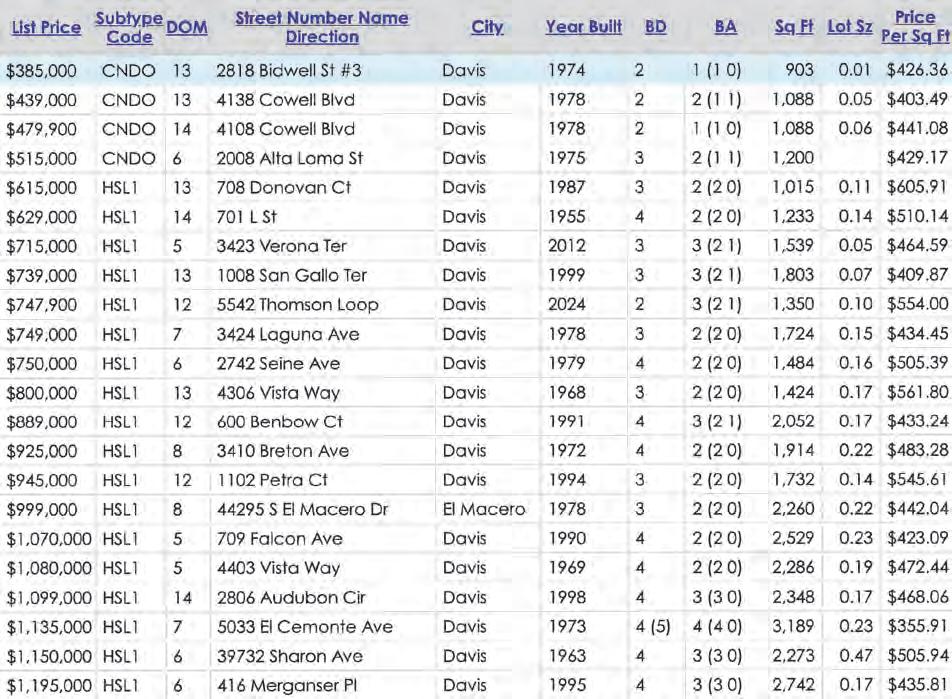

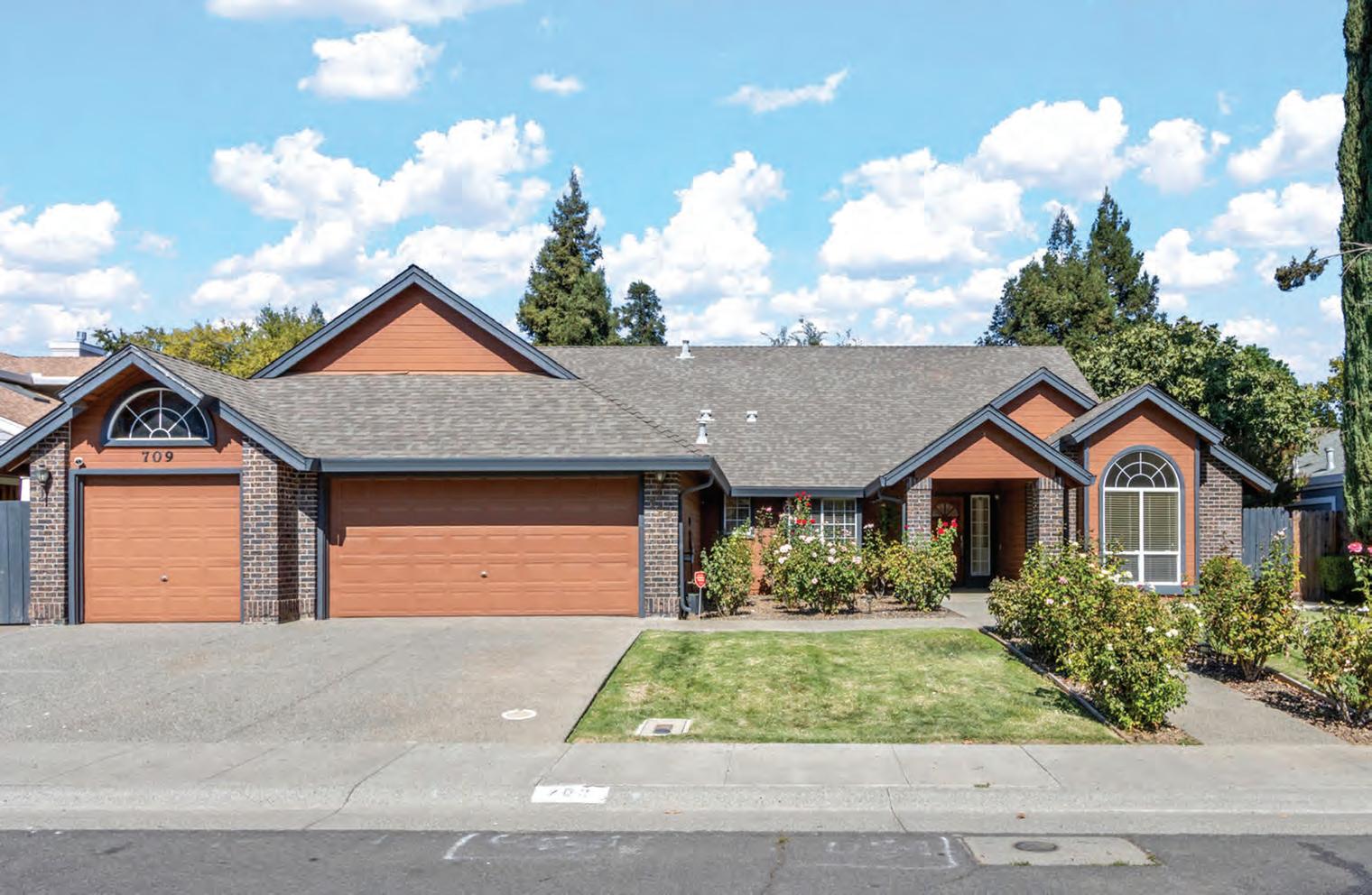


















































































KACIE GOFF BANKRATE.COM
Homeownership requires a lot of responsibility, ranging from managing a mortgage to staying on top of maintenance. But no matter how responsible you are, before you can buy a home, you need to be able to do one thing: legally sign a contract.
If your home state doesn’t yet consider you a legal adult, you can’t sign for the house, or the loan you’ll likely need to finance it. It all depends on what your state has set as the age of majority. Luckily, the age of majority is younger than you might think – typically lower than the legal drinking age.
The law specifies an age at which you can legally vote, and legally buy alcohol, but it does not specify an age at which you may become a homeowner. Instead, the line is drawn in a different way: Each state defines its age of majority, or the age at which a resident is legally considered an adult.

Q: Last July, we moved into one of the new housing developments in Fairfield. In August, a punctured copper water pipe flooded a portion of the second floor hallway, part of a bedroom, the closet, and totally damaged the bedroom underneath. They tore up part of the wall to fix the pipe, removed part of the hallway carpet, part of the bedroom carpet, the whole closet carpet, tore up the whole downstairs bedroom carpet, tore up the ceiling, removed one entire dry wall and tore up part of another wall. This work gener ated a lot of dust.
Tim Jones
You can legally buy property when you reach the age of majority, which in most states is 18 years old. There are only three exceptions: In Alabama and Nebraska the age of majority is 19, and in Mississippi, it’s 21. Before you reach the age of majority, you are legally considered a minor. And a minor can’t legally sign the contracts required for a real estate transaction. In some states, a minor’s name might be put on the home title, but he or she won’t be able to do anything with it until they reach the age of majority. This
happens when parents put their children on the title then pass away, for example. In such a case, a custodianship, trust or guardianship is generally established to hold the property until the minor comes of age.
The situation is the same in the case of buying with a co-signer.
Even if your parent or another adult is willing to sign on with you, a co-signing situation would still require your own signature. And until you reach the age of majority, that’s not an option.
Beyond all of the legal and financial ramifications of homeownership, think through the
lifestyle implications, too. If you’re thinking about buying a home, you should be prepared to stay put for at least a few years, comfortably managing the mortgage, maintenance and more. In addition, being a first-time homebuyer before many of your friends probably means making sacrifices they won’t have to make. Renting can provide a sense of freedom – both financial and geographic – that homeowners locked into one place don’t have. That said, you can expect to learn some valuable lessons, too, and you’ll have a big head start on building home equity. Just be sure to consider the tradeoffs before you make this major life decision.
Before you can buy a home, you need to be able to do one thing: legally sign a contract. See Old, Page 6
A restoration contractor used two heavy-duty fans for three days to dry the upstairs, and two heavy-duty fans and a humidifier to dry the down stairs bedroom. The damage is still in the process of being repaired. For three days we could hardly sleep due to the loud humming of the fans and my wife was unable to work for a day due to severe headache caused by lack of sleep.
I inquired to the building
be compensated and I was told we are not entitled to anything

I haven’t reviewed your purchase contract, but I suspect a close read would reveal that the builder is only on the hook for the repairs, not your other monetary damages.
The warranty that comes with your home, or anything
See Jones, Page 6



GM offered America’s first car loan in 1919. Buyers would have to put 35% down and pay off the loan in 12 months. By the 1920s, Ford was selling cars with 5% down and carrying the loans at 10 to 15% interest.
There are no records on the number of repossessions during the 1929 crash, but I was shocked just now to read that there were more than 1.7 million cars repossessed in 2024 in America.
A car repossession is horrible because if a person voluntarily turns in his car, the bank will come after the person for the deficiency balance, and there is almost always a large amount still owed after the car is sold at auction.
“Buy now pay later” is necessary for houses and automobiles but, yikes, the worst thing we can do is buy food and pay months or years later on a Visa or Master Card. Using cards to borrow money for clothes, household goods and living expenses is what forced my family to sell our house in Pacifica 36 years ago and move to Vacaville to start over.
Financing kids’ underwear for four years at 24.99% on a Visa card is not good unless the kids

can make the underpants last for five to 10 years. Real estate debt is good debt because houses appreciate in value. Every other thing financed depreciates very quickly, especially food, socks and underwear. Now, young people are jumping on this “buy now pay later” option with Affirm and Klarna at Walmart and Amazon with short-term loans. Some are interest free, but most are very high rates. The easier it is to buy something the more dangerous it is for middle class people to achieve financial success.
Jim Porter, NMLS No. 276412, is the branch manager and senior loan adviser of Solano Mortgage, NMLS No. 1515497, a division of American Pacific Mortgage Corporation, NMLS No. 1850, licensed in California by the Department of Financial Protection and Innovation under the CRMLA / Equal Housing Opportunity. Jim can be reached at 707-449-4777.

















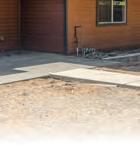
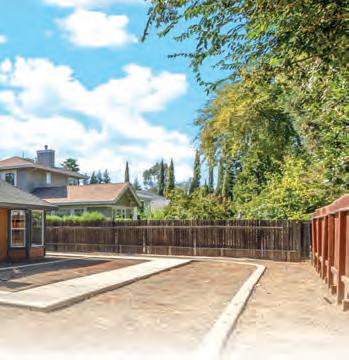




TOTAL SALES: 4
LOWEST AMOUNT: $275,000
HIGHEST AMOUNT: $1,270,000
MEDIAN AMOUNT: $413,500
AVERAGE AMOUNT: $593,000
466 Arguello Drive - $1,270,000
08-28-25 [4 Bdrms - 2758 SqFt - 2005 YrBlt], Previous Sale: 11-21-19, $850,000
351 West M Street - $400,000
08-25-25 [4 Bdrms - 2575 SqFt - 1977 YrBlt]
900 Southampton Road #123 - $427,000
08-25-25 [3 Bdrms - 1226 SqFt - 1977 YrBlt], Previous Sale: 04-18-18, $319,000
900 Southampton Road #1 - $275,000
08-29-25 [1 Bdrms - 728 SqFt - 1977 YrBlt], Previous Sale: 10-03-08, $73,500
TOTAL SALES: 3
LOWEST AMOUNT: $375,000
HIGHEST AMOUNT: $905,000
MEDIAN AMOUNT: $501,000
AVERAGE AMOUNT: $593,667
409 West C Street - $375,000
08-29-25 [3 Bdrms - 1540 SqFt - 1946 YrBlt], Previous Sale: 02-03-16, $300,000 725 Glenwood Way - $905,000
08-26-25 [5 Bdrms - 2022 YrBlt], Previous Sale: 10-25-22, $701,500
490 South Court - $501,000
08-26-25 [4 Bdrms - 1386 SqFt - 1980 YrBlt], Previous Sale: 04-23-25, $388,500
TOTAL SALES: 19
LOWEST AMOUNT: $225,000
HIGHEST AMOUNT: $1,800,000
MEDIAN AMOUNT: $690,000
AVERAGE AMOUNT: $717,368
943 Appleridge Place - $1,800,000
08-27-25 [3 Bdrms - 3502 SqFt - 1999 YrBlt], Previous Sale: 06-19-18, $838,000 1627 Armijo Court - $705,000
08-28-25 [4 Bdrms - 2077 SqFt - 1985 YrBlt] 5313 Autumn Rock Court - $1,595,000
08-26-25 [4 Bdrms - 3770 SqFt - 2005 YrBlt], Previous Sale: 11-18-08, $650,000 104 Cannes Court - $780,000
08-28-25 [4 Bdrms - 2036 SqFt - 1989
YrBlt], Previous Sale: 03-29-17, $523,000 3909 Danbury Way - $800,000
08-26-25 [5 Bdrms - 3048 SqFt - 2005 YrBlt], Previous Sale: 04-10-20, $457,000 1772 Daniel Court - $465,000
08-29-25 [3 Bdrms - 1196 SqFt - 1984 YrBlt],
Previous Sale: 00/1991, $137,500 5340 Discovery Way - $768,000
08-27-25 [4 Bdrms - 3130 SqFt - 2017 YrBlt], Previous Sale: 09-16-22, $768,000 3748 Doral Drive - $810,000
08-28-25 [5 Bdrms - 2647 SqFt - 1997 YrBlt], Previous Sale: 08-21-01, $455,000 59 Manchester Drive - $438,000
08-28-25 [3 Bdrms - 1285 SqFt - 1993 YrBlt], Previous Sale: 08-15-18, $325,000
3817 Rollingwood Drive - $690,000
08-29-25 [4 Bdrms - 2287 SqFt - 1994 YrBlt],
Previous Sale: 06-09-10, $325,000
5038 Rowe Drive - $575,000
08-29-25 [3 Bdrms - 1642 SqFt - 2002 YrBlt], Previous Sale: 09-23-15, $342,000
2444 Sanders Lane - $789,000
08-29-25 [3 Bdrms - 2412 SqFt - 2014 YrBlt],
Previous Sale: 09-16-14, $511,500
1511 Snowdrop Court - $660,000
08-29-25 [3 Bdrms - 2094 SqFt - 2020 YrBlt], Previous Sale: 02-21-20, $522,000
4800 Stoneridge Court - $375,000
08-29-25 [3 Bdrms - 1108 SqFt - 1987 YrBlt],
Previous Sale: 10-08-08, $210,000
2098 Strauss Drive - $580,000
08-28-25 [4 Bdrms - 1904 SqFt - 1976 YrBlt],
Previous Sale: 09-25-18, $433,000
712 Tahoe Court - $825,000
08-29-25 [4 Bdrms - 2624 SqFt - 2002 YrBlt], Previous Sale: 06-20-11, $417,500
2915 North Texas Street #238$300,000
08-29-25 [2 Bdrms - 860 SqFt - 1986 YrBlt],
Previous Sale: 09-27-17, $224,000
68 Villa Circle - $225,000
08-26-25 [2 Bdrms - 884 SqFt - 1972 YrBlt]
1121 Willow Lane - $450,000
08-28-25 [4 Bdrms - 2261 SqFt - 1988 YrBlt]
TOTAL SALES: 6
LOWEST AMOUNT: $325,000
HIGHEST AMOUNT: $545,000
MEDIAN AMOUNT: $429,500
AVERAGE AMOUNT: $438,167
504 Birch Ridge Drive - $429,000
08-25-25 [2 Bdrms - 1689 SqFt - 2005 YrBlt], Previous Sale: 04-25-05, $421,324
448 Cedar Ridge Drive - $375,000
08-27-25 [2 Bdrms - 1105 SqFt - 2000 YrBlt], Previous Sale: 11-21-00, $175,274
330 Crystal Downs Drive - $545,000
08-26-25 [3 Bdrms - 2178 SqFt - 2003 YrBlt], Previous Sale: 12-20-13, $280,000
654 Deerfield Way - $525,000
08-26-25 [3 Bdrms - 1864 SqFt - 1999 YrBlt], Previous Sale: 06-19-18, $437,500
619 Turnberry Terrace - $325,000
08-26-25 [2 Bdrms - 950 SqFt - 1999 YrBlt], Previous Sale: 10-06-99, $143,375
503 Twin Lakes Lane - $430,000
08-27-25 [2 Bdrms - 1673 SqFt - 2010 YrBlt],
Previous Sale: 03-07-12, $200,000
TOTAL SALES: 7
LOWEST AMOUNT: $380,000
HIGHEST AMOUNT: $565,000
MEDIAN AMOUNT: $480,000
AVERAGE AMOUNT: $480,286
639 Fulmar Drive - $450,000
08-27-25 [2 Bdrms - 1130 SqFt - 1983 YrBlt],
Previous Sale: 06-09-00, $149,900
508 Gadwall Drive - $565,000
08-29-25 [4 Bdrms - 1304 SqFt - 1976 YrBlt],
Previous Sale: 06-18-24, $545,000
834 Greenhead Way - $435,000
08-28-25 [3 Bdrms - 1088 SqFt - 1976 YrBlt],
Previous Sale: 11-02-10, $140,000
903 Harlequin Way - $525,000
08-29-25 [3 Bdrms - 1149 SqFt - 1981 YrBlt],
Previous Sale: 07-07-14, $220,000
813 Redhead Way - $380,000
08-29-25 [3 Bdrms - 1320 SqFt - 1976 YrBlt],
Previous Sale: 05-24-18, $395,000
321 Ridgecrest Circle - $480,000
08-29-25 [2 Bdrms - 1058 SqFt - 1991 YrBlt],
Previous Sale: 08-02-21, $475,000
808 Tulare Circle - $527,000
08-29-25 [3 Bdrms - 1327 SqFt - 1988 YrBlt],
Previous Sale: 04-25-16, $330,000
TOTAL SALES: 22
LOWEST AMOUNT: $259,000
HIGHEST AMOUNT: $1,365,000
MEDIAN AMOUNT: $644,500
AVERAGE AMOUNT: $689,477
494 Aberdeen Way - $590,000
08-26-25 [3 Bdrms - 1348 SqFt - 1984
YrBlt], Previous Sale: 05-04-09, $175,000
208 Auburn Way - $825,000
08-29-25 [3 Bdrms - 2350 SqFt - 1986 YrBlt]
3019 Belden Court - $791,500
08-25-25 [4 Bdrms - 3337 SqFt - 2021 YrBlt]
1390 Callen Street #C - $259,000
08-28-25 [2 Bdrms - 952 SqFt - 1972 YrBlt], Previous Sale: 08-13-18, $159,000
1012 Capitola Court - $1,150,000
08-27-25 [6 Bdrms - 4040 SqFt - 2020
YrBlt], Previous Sale: 02-06-20, $978,000
7598 Deer Valley Trail - $1,365,000
08-29-25 [3 Bdrms - 1936 SqFt - 1984 YrBlt], Previous Sale: 05-14-02, $447,500
802 Derry Circle - $695,000
08-28-25 [3 Bdrms - 2262 SqFt - 1990 YrBlt], Previous Sale: 03-17-22, $750,000
608 Edenderry Drive - $630,000
08-25-25 [3 Bdrms - 1679 SqFt - 1998 YrBlt], Previous Sale: 02-18-20, $495,000
601 Fox Pointe Road - $608,000
08-25-25 [3 Bdrms - 1542 SqFt - 1989 YrBlt], Previous Sale: 09-18-20, $530,000
107 Kingswood Avenue - $500,000
08-29-25 [4 Bdrms - 2075 SqFt - 1978 YrBlt]
70 Manzanita Drive - $380,000
08-27-25 [4 Bdrms - 1312 SqFt - 1967 YrBlt]
179 Midvale Drive - $620,000
08-29-25 [4 Bdrms - 2073 SqFt - 1977 YrBlt]
4545 Midway Road - $492,000
08-27-25 [3 Bdrms - 1456 SqFt - 1965 YrBlt],
Previous Sale: 04-09-03, $550,000
154 Monte Verde Drive - $1,025,000
08-26-25 [5 Bdrms - 2579 SqFt - 1978 YrBlt],
Previous Sale: 05-02-23, $900,000
748 Notre Dame Drive - $705,000
08-28-25 [3 Bdrms - 1621 SqFt - 1989 YrBlt],
Previous Sale: 10-31-19, $470,000
512 North Orchard Avenue - $750,000
08-29-25 [5 Bdrms - 2125 SqFt - 1974 YrBlt],
Previous Sale: 07-06-18, $475,000
1068 Parkside Drive - $647,000
08-25-25 [4 Bdrms - 1751 SqFt - 2014 YrBlt],
Previous Sale: 10-26-20, $550,000
115 Rainier Circle - $400,000
08-29-25 [2 Bdrms - 1152 SqFt - 1963 YrBlt],
Previous Sale: 04-04-09, $160,000 7055 Sitka Court - $642,000
08-29-25 [3 Bdrms - 1999 SqFt - 2016 YrBlt], Previous Sale: 02-04-20, $499,500 531 Star Lilly Drive - $770,000
08-25-25 [4 Bdrms - 3532 SqFt - 2005 YrBlt], Previous Sale: 07-18-11, $380,000 551 Stonewood Drive - $755,000
08-26-25 [4 Bdrms - 2096 SqFt - 1988 YrBlt]
208 Waterford Drive - $569,000
08-29-25 [3 Bdrms - 1268 SqFt - 1989 YrBlt], Previous Sale: 06-21-13, $278,500
TOTAL SALES: 26
LOWEST AMOUNT: $220,000
HIGHEST AMOUNT: $815,000 MEDIAN AMOUNT: $458,500 AVERAGE AMOUNT: $487,058
185 Baxter Street - $452,000
08-28-25 [2 Bdrms - 624 SqFt - 1944 YrBlt], Previous Sale: 09-14-99, $99,000
349 Bw Williams Drive #B - $515,000
08-25-25 [5 Bdrms - 1842 SqFt - 1954 YrBlt], Previous Sale: 06-22-12, $118,500 9106 Cambridge Circle - $755,000
08-28-25 [3 Bdrms - 2772 SqFt - 2004 YrBlt], Previous Sale: 02-22-18, $539,000 1152 Carrot Lane - $625,000
08-28-25 [3 Bdrms - 2107 SqFt - 2009 YrBlt], Previous Sale: 09-17-18, $515,000
136 Edgemont Avenue - $585,000
08-28-25 [4 Bdrms - 1690 SqFt - 1939 YrBlt], Previous Sale: 01-03-25, $398,000 2768 Georgia Street - $450,000
08-25-25 [2 Bdrms - 868 SqFt - 1941 YrBlt], Previous Sale: 01-15-21, $200,000 1201 Glen Cove Parkway #303$310,000
08-25-25 [1 Bdrms - 665 SqFt - 1992 YrBlt],
Previous Sale: 03-11-20, $289,000 248 Glenview Circle - $739,000
08-27-25 [5 Bdrms - 2573 SqFt - 1992 YrBlt], Previous Sale: 02-27-16, $445,000 812 Grant Street - $376,000
08-29-25 [2 Bdrms - 1079 SqFt - 1944 YrBlt],
Previous Sale: 01-17-01, $130,000
128 Hastings Avenue - $360,000
08-25-25 [3 Bdrms - 1104 SqFt - 1965 YrBlt]
100 Howard Avenue - $525,000
08-27-25 [3 Bdrms - 1773 SqFt - 1941 YrBlt],
Previous Sale: 12-15-20, $487,000
751 Illinois Street - $440,000
08-25-25 [2 Bdrms - 1086 SqFt - 1942 YrBlt],
Previous Sale: 09-12-11, $67,100
1904 Illinois Street - $565,000
08-28-25 [3 Bdrms - 1348 SqFt - 1948 YrBlt]
163 Kemper Street - $470,000
08-29-25 [4 Bdrms - 1440 SqFt - 1958 YrBlt], Previous Sale: 07-18-14, $189,000
300 Locust Drive #6 - $412,000
08-26-25 [2 Bdrms - 1433 SqFt - 1981 YrBlt],
Previous Sale: 02-27-24, $465,000 1712 Marin Street - $370,000
08-29-25 [2 Bdrms - 768 SqFt - 1917 YrBlt],
Previous Sale: 06-07-13, $129,500
1065 Orchard Avenue - $220,000
08-28-25 [5 Bdrms - 2640 SqFt - 1949 YrBlt],
Previous Sale: 05-31-22, $635,000
364 Pacer Court - $575,000
08-25-25 [3 Bdrms - 1341 SqFt - 1985 YrBlt],
Previous Sale: 08-17-99, $179,812
109 Phelan Avenue - $318,500
08-29-25 [2 Bdrms - 672 SqFt - 1924 YrBlt],
Previous Sale: 12-01-08, $49,000
119 Pierre Court - $500,000
08-25-25 [3 Bdrms - 1731 SqFt - 1986 YrBlt]
201 Redwing Street - $455,000
08-29-25 [3 Bdrms - 1134 SqFt - 1962 YrBlt],
Previous Sale: 02-07-25, $458,500
148 Stageline Drive - $419,000
08-28-25 [2 Bdrms - 886 SqFt - 1985 YrBlt],
Previous Sale: 00/1990, $122,000
7147 Stonebrooke Drive - $815,000
08-27-25 [5 Bdrms - 2662 SqFt - 2017 YrBlt],
Previous Sale: 05-27-25, $720,000
2765 Tuolumne Street - $435,000
08-26-25 [3 Bdrms - 1064 SqFt - 1940 YrBlt],
Previous Sale: 09-12-18, $305,000
417 Washington Street - $515,000
08-29-25 [2 Bdrms - 1272 SqFt - 1934 YrBlt],
Previous Sale: 10-24-16, $405,000
110 Wedgewood Court - $462,000
08-29-25 [3 Bdrms - 1008 SqFt - 1955 YrBlt]

MEAGHAN HUNT BANKRATE.COM
Buying a house is no small undertaking, and neither is compiling the mountain of paperwork necessary to complete the transaction.
If you need a mortgage to purchase your home, your lender will want to look over a wide variety of personal and financial documents to assess your credit-worthiness –and that’s before you even get to the offer and the closing. Read on to learn about all the documents you’ll need to make the process as speedy and stress-free as possible.
You will need a slew of documentation throughout the entire homebuying process, with access to different documents at various stages of the transaction. In short, be ready to prove your employment status and income, and to provide detailed documentation of all your debts, savings and assets.
Lining up the paperwork needed before you actually start the process will help you remain organized throughout. The documents you need are likely to include the following (and possibly more):
•Recent tax returns
•Recent W-2 forms
•A letter from your employer stating your employment status
•If self-employed, business tax returns and profit-andloss records
•Bank statements
•Retirement and brokerage account statements
•Student loan and/or car loan statements
•Credit card statements
•Asset titles, including your current home(s) and vehicle(s)
•History of residence (an informal list of your addresses for the past several years)

ADOBE STOCK
If you need a mortgage to purchase your home, your lender will want to look over a wide variety of personal and financial documents to assess your credit-worthiness – and that’s before you even get to the offer and the closing.
•Proof of any additional income aside from your annual earnings, such as alimony, Social Security, bonuses, etc.
•A gift letter, if applicable
•Government-issued photo ID
A great first step is to get a sense of what your credit report looks like. A minimum credit score of 620 is typically needed to qualify for a mortgage loan, though some loans have lower minimums. The higher your credit score, the better mortgage
rate you’re likely to be eligible for. If your credit is suboptimal, it’s good to know that in advance –give yourself a bit of time to raise that number before applying for the loan.
Similarly, if you’ve been lessthan-punctual in filing your taxes over the years, now is the time to fix that. To secure home financing, you’ll need to provide at least a couple of years worth of tax returns, or possibly more. Make sure you have them before starting the process. “If you haven’t been filing your taxes, that’s number one – start there,” says Trenesha Harrison, broker/ owner and Realtor at Oklahoma’s
iLove Realty.
Mortgage preapproval is where the plot thickens in terms of paperwork. Be prepared to provide documentation proving the following for each borrower on the loan:
Proof of identity
•A driver’s license, Social Security card or passport
•A list of all residential addresses over the past several years
Proof of employment
•Pay stubs for at least the
•W-2 or self-employment tax returns for the past two years
•A list of employers over the
•Bank statements dating back a minimum of 60 to 90 days for all accounts (checking, savings, etc.)
•Business banking and related records, if self-employed
•Documentation supporting any income other than your
•Statements for investment, trust, retirement and other finan-
•Proof of ownership for any vehicles or other real
•If a third-party gift is serving as part of your down payment, a
•Statements dating back 60 to 90 days for any credit card, auto loan, personal loan and/or student
•A copy of your credit report
•Your rental history, if applicable: proof of payment on any leased apartment, house or car
Mortgage preapproval will give you an idea of how much you can borrow, and it also helps show home sellers that you are a serious and qualified buyer. Keep in mind, though, that you may not want to spend the full amount you are preapproved for – there are plenty of other costs associated with buying a home, and you need enough cash to cover it all.
Once you’ve found a home and you’re ready to make an offer, you’ll need – you guessed it – more paperwork. Specifically, proof of earnest money.
See Document, Page 6
From Page 5
This deposit, which a buyer puts down to prove their intent to buy the home, is typically paid when the purchase agreement is signed. It is held in escrow until closing, when it gets applied toward the payment. The amount is usually 1 percent of the home’s purchase price (for example, $3,500 for a $350,000 home). You will need to have this money ready to go prior to signing your contract, so be sure it is liquid and easy to access.
There are many documents involved at closing, both legal and financial. If you are working with an agent and/or a real estate attorney, they will likely gather together the paperwork needed on your end of the transaction. Closing documents include, but are not limited to:
•Proof of homeowner’s insurance
•Closing disclosure
•Loan application
•Copy of purchase contract
•Certificate of occupancy, in the case of a new-construction home
The closing is also where money will formally change hands – be sure you know in advance how much and to whom, so you can have cashier’s checks or certified checks in-hand.
If you are not working with a real estate agent or attorney, be sure these documents also make it to the closing table. You’ll want to ensure they are accounted for once closing paperwork is signed.
•Home title (often held by a title company until your mortgage is paid off)
•Title insurance policy
•Affidavit of title
•Deed of trust or mortgage
•Note
•Deed
•Initial escrow statement
•Transfer tax declaration
Working with an experienced real estate agent can take a lot of the pressure off you when it comes to ensuring that all your paperwork is in order. Having a seasoned professional on your side is invaluable, especially as you make an offer and prepare for closing. Your agent will know which documents are needed at what stages of the process, and he or she can guide you along the journey every step of the way.
• What documents do I need to bring with me to a house closing? Make sure you have a valid government-issued ID, such as a driver’s license or a passport, along with proof of a homeowners insurance policy. Additionally, you’ll need a copy of the purchase contract and loan application, although your lender will likely make sure these make it to the closing table. Finally, be sure to verify how you’ll need to pay the final closing costs. Typically it will
be with a certified or cashier’s check, or even a bank wire transfer, which means you’ll need these ready to go in advance.
• What kind of proof of income do I need to buy a house? Pay stubs, bank statements, recent tax returns, W-2 and/or 1099 forms and more are all evidence of your income. You may need them for several months (or years) back. If you plan to use other streams of income on your mortgage application, such as investment dividends or alimony payments, expect to track down documentation that shows the money trail.
•Applying for a mortgage and closing on a home can involve a mountain of paperwork.
•Documentation needed typically includes in-depth information about your finances, such as pay stubs, tax returns and bank statements.
•To avoid delays, it’s important to keep it all organized – especially during the underwriting process and as you approach closing.
You need to wait until the age of majority to buy a home. But even once you’re of age, you’ll have to carefully consider your ability to qualify for a mortgage. A young person with little to no credit history, or employment history, may have a difficult time getting approved for financing.
Unless you’re able to make an all-cash offer on a house – a rarity for young adults early in their careers and savings-building – you’ll need to take out a loan to buy. And mortgage lenders don’t offer six-figure loans to just anyone. To get a mortgage,
you’ll need to meet a variety of requirements, including:
•A stable income, provable with pay stubs
•A good debt-toincome ratio
•A good credit score
•Enough money for a down payment, closing costs and ongoing upkeep costs
In other words, you need to be able to show the lender that you’re financially reliable. You may be able to legally buy a house at 18, but you generally won’t have the years of financial statements lenders want to see. As a result, getting a mortgage can be particularly challenging.
Pros
•You start building equity right away
•You don’t throw money away on rent
•You strengthen your credit through managing your mortgage
•You learn financial responsibility and budgeting skills
•You get the stability of your own home early in life
Cons
•It may be difficult to secure a mortgage
•You have to come up with a down payment and closing costs
•You’re locked into a fixed living situation, while friends may be bouncing around from rental to rental – or city to city
•You may have to pass on other experiences because your resources are tied up in your house
•You’re responsible for home maintenance
Bottom line
How old do you have to be
From Page 2
else you buy, is just a contract in disguise. In essence, you agree to pay “X” dollars for a home and the builder agrees to take your money and sell you a home along with a warranty. The builder can limit the warranty within the terms of the purchase contract.
Generally speaking, claims such as emotional distress and inconvenience are not allowed in breach of contract actions.
Likewise, liability for the missed workday may be specifically removed from the warranty.
Even if it weren’t, you were under a legal duty to limit the amount of your monetary loss as much as reasonably possible. It would be reasonable to have expected you to get a hotel room so you and your wife could get a good night’s sleep and not miss any work.
And finally, even though the work was being done by the builder, you should have made a claim with your insurance company who, most likely, would have put you up in a hotel.
to buy a house? Legally, somewhere between 18 and 21, depending on the age of majority in your state. But obtaining a mortgage at such a young age can be a challenge, and owning a home comes with a lot of responsibilities and a sizable financial burden. As a young adult, you might want to wait to buy – and to lock yourself into one place and large mortgage payments – until you’re older and more settled.
Key takeaways
•You can legally buy property when you reach the age of majority, or the age at which you are legally considered an adult.
•However, that age differs by state – in most states, the age of majority is 18, but in a few it’s older.
•Even once you’re of age, you may have difficulty getting a mortgage due to your short employment and credit history.
Of course, the problem with making an insurance claim is that the total cost may have been below your deductible.
The other concern is that the insurance company would keep records of the fact there was water damage on the property. With mold as a continual scare for home buyers, a water damage history may prevent you from getting homeowner’s coverage or the best price for your house down the road.
So take a close look at your purchase contract and any other information the builder gave you before you closed escrow. The specific language in the warranty provisions will give you an idea of whether or not the builder may be liable for your incidental costs.
Tim Jones, Esq., is a real estate attorney in Fairfield. If you have any real estate questions you would like to have answered in this column, you can send an email to AllThingsRealEstate@ TJones-Law.com.

Iremember the day quite well. I went to my Rotary Club meeting and returned to my office in the garden. I casu ally glanced into the garden as I entered the building. I noticed a sizable group of nature lovers gathered around looking through their binoculars. I asked inside if anyone knew what they were looking at. The answer was a great purple hairstreak butterfly. Those gathered had just paid $5 to get into the National But terfly Center in Mission, Texas, where I was executive direc tor. That was the entry fee at the time and worth every penny because you never knew what you might find at this nature reserve on the Rio Grande. That day the great purple hairstreak became one of my favorite butterflies. I now judge my butterfly year on whether I see a great purple hairstreak or not.

purple hairstreak butterflies come out of nowhere to feast on the rich nectar of the Temple of Bloom tree. Besides being beautiful and our largest hairstreak, it is also unique in that its larval host plant is the mistletoe. Would you have ever thought that mistletoe had such a role? Can I get an “amen” or “hallelujah”?
So just imagine, it’s midAugust and the heat is approaching an unbearable state. Flowers seem to be
winding down, and magically the Temple of Bloom starts showing out with large panicle-like clusters of fragrant white flowers. The bloom period so far is around 5 to 6 weeks at my house. There are a couple of rabbits I need to chase at this point.
While the great purple hairstreak butterfly is like making the Super Bowl to The Garden Guy, the tree is really a pollinator extravaganza. I also got red-banded, gray, olive juniper, and white M hairstreaks too.
But this year was like an eastern tiger swallowtail frenzy. The red-spotted purple butterflies normally associated with
The Temple of Bloom’s white blossoms attract a host of pollinators like this great purple hairstreak that shares space with nearby bees.
FAR RIGHT: In addition to hairstreaks, the eastern tiger swallowtails will have the Temple of Bloom flowers high on the menu.

Four years ago, I planted a small tree called the Temple of Bloom, a compact form of the Seven-Son Flower. It can be a large shrub or small tree. I have gone the tree route. The bark exfoliates, becoming a winter point of interest. But I never knew what all the white clusters of fragrant blooms would yield from the standpoint of pollinators.
You probably have guessed where I am headed. Each year indeed my treasured great





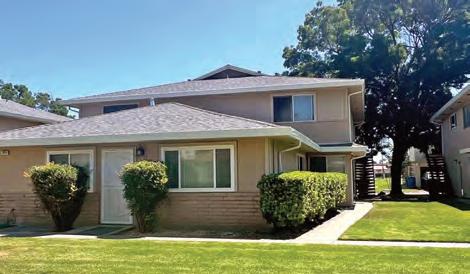


















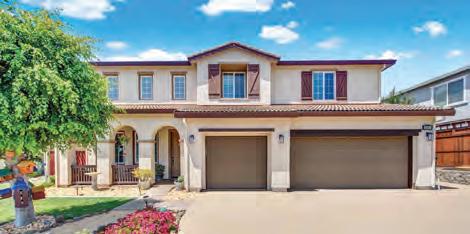



















































































Your tub and shower deserve the same treatment. Soap scum and mineral deposits build up faster than you think, especially if you have hard water. Spray and scrub all surfaces, clean bottles and racks, and clear away water spots on glass doors.
cloths at least once a week (and more often than that, if they get heavy use or they’re in humid rooms where they don’t dry quickly.) Don’t forget the mirror. A quick glass cleaner pass gives you a streak-free view of all your hard work.
Some chores can wait a little longer, but they’re still important. Once a month, wash the walls to clear away moisture buildup, dust and product residue. Go through cabinets and drawers, tossing expired products and wiping down shelves. Wash your shower curtain and liner monthly to stop mildew before it starts.
Grout and caulk deserve special care. Mildew loves to hide there, so scrub with a grout cleaner or diluted bleach and a small brush. Check your ventilation fan, since dust and sticky residue from humid air can slow it down. Wipe or vacuum the cover and blades so it works efficiently. If you have a jetted tub, clean the jets monthly to prevent buildup from getting pumped back into your bathwater.
Day-to-day upkeep is quick and painless. Put away items left on the counter, wipe up water spots as they happen, and keep an eye on supplies like soap and toilet paper. These small moves cut down your deepcleaning time.
If it still feels like more than you can handle, a professional cleaning service can save the day. Standard cleanings for an average home run $120 to $235, while a deep clean can climb higher.
floor first to collect hair and dust, then mop with hot water and cleaner. Empty the trash weekly and wipe down the can to prevent lingering odors. Wash towels, mats and wash-
You can save money by doing simple upkeep yourself and bringing in the pros for big or unpleasant jobs. Whether you clean it all yourself or get help, the secret is consistency. The cleaner you keep it, the less effort it takes.
Tweet your home care questions with #AskingAngi and we’ll try to answer them in a future column.

Today, kitchens that incorporate design elements from famed architects go far beyond the latest trends. They draw on key principles of balance, proportion and integrity to create spaces that feel luxurious and enduring. Every detail, from faucet finishes to cabinet silhouettes, plays an important role in shaping the overall space. Homeowners are seeking a mix of beauty and function, turning to the outdoors for inspiration.
Designers are inspired by architectural philosophies, coupled with cues from nature to create visually unique spaces. Geometric shapes and strategic focal points shape the kitchen’s experience, directing flow and
rhythm. The Frank Lloyd Wright Kitchen Collection by Brizo, embodies these principles with its rounded and squared arch spouts, asymmetrical designs and clean lines, coupled with a wide choice of natural materials. Wood, glass, black onyx and concrete effortlessly combine to create a statement look.
Emphasizing organic architecture demands quality materials to create cohesive, inviting kitchens that blend indoor and outdoor elegance. These elements serve not only as structural features, but as sources of inspiration that inform design choices around flooring, appliances and fixtures. By introducing expressive, tactile materials, designers are creating unexpected yet harmonious combinations, allowing the materials themselves to act as design features, rather than relying solely
Homeownership is often characterized as a fulfillment of a dream. Indeed, many homeowners feel their ability to buy a home is a reflection of their discipline and commitment to saving money. That discipline and dedication can set homeowners up for long-term financial health, providing a unique sense of security along the way.
First-time home buyers may not know what to expect upon buying a home, and since each home is unique, it’s impossible for even long-time homeowners to say with certainty exactly how things will unfold once those new to home ownership get the keys to their first house.
of 20% or more will have to pay for primary mortgage insurance, which is typically a set fee that is incorporated into the mortgage payment each month. PMI fees are typically waived once the balance on the mortgage reaches 79% or less of the purchase price, though some lenders may waive PMI prior to that if the value of the home increases considerably before the loan balance reaches the predetermined marker.
on added décor.
Visionaries like Frank Lloyd Wright drew influence from nature, infusing design with simplicity, individuality and integrity. Today’s kitchens can echo this sentiment through the incorporation of finishes and accents in earth tones, warm golds, deep charcoals and soft metallics, creating warmth and authenticity. As kitchen design evolves, spaces designed with an eye for architecture provide a cohesive vision, narrating a story through shape, form and material.
These new spaces transcend mere utility, merging purpose with art and using layout, materials and natural palettes to define their essence. This is not just a passing trend; it’s a cultural shift reshaping kitchen and home design for the future.
Various expenses might be the only common variable when it comes to homeownership, and some of those expenses may surprise first-time buyers. With that in mind, the following are some expenses first-time buyers can expect once their offers are accepted.
• Down payment: Conventional wisdom long suggested home buyers should submit a down payment of at least 20% of the overall purchase price upon buying a home. Buyers who want to follow that advice would need a down payment of $80,000 when buying a $400,000 home. But many home buyers now submit down payments considerably less than 20%, particularly in the modern real estate market, which is characterized by high prices and low inventory. The lower the down payment, the higher your monthly mortgage payment will be, so it’s best to save as much as possible toward a down payment.
• Primary mortgage insurance (PMI): Buyers who cannot come up with a down payment
• Closing costs: The amount of closing costs varies widely depending on a host of variables, but Bankrate.com notes it’s not uncommon for these costs to come in at somewhere between 2 and 5% of the loan principal. Closing costs must be paid no later than when the sale becomes official and buyers sign on the (many) dotted lines. Application and credit fees, title fees, underwriting fees, appraisal fees, and transfer tax are among the various fees that fall under the umbrella of closing costs.
• Moving: It’s also important that first-time home buyers budget for moving costs. Moving costs vary and may depend on how much buyers already own and how far they’re moving. The home renovation experts at Angi estimate that local moves typically cost somewhere between $883 and $2,568, while long-distance moves may run buyers anywhere from $2,700 to $10,000 or more.
These costs are some of the upfront fees aspiring homeowners can expect when buying a home. Long-term costs, including homeowners’ insurance (which is separate from PMI), property taxes, homeowners’ association fees, and maintenance are some additional expenses buyers can plan for as they try to determine their home buying budgets.












































Iof a facelift? While an all-siding exterior can be attractive, using manufactured stone to complement vinyl siding will turn heads, for ultimate curb appeal.
Manufactured stone veneer adds elegance and charm to a home’s exterior, calling to mind rustic country cottages and stately manors. When paired with vinyl siding, it offers a dramatic, earthy variation in texture that makes any style or color stand out.
Sourcing your materials from the right manufacturer will make all the difference. For example, ProVia artfully crafts its manufactured stone to replicate the
stone masons who cut and chisel individual stones by hand, they replicate the look of real stone from unique geographic regions, reproducing undercuts, subtle textures and natural hues.
With many stone profiles, grout colors, and other options to select among, it’s easy to get overwhelmed by choice. As you explore your options, keep in mind that experts have identified these stone profiles as pairing especially well with siding:
• Ledgestone, with its haphazard shapes, jagged contours and scraggy surfaces
• Dry Stack, with its compact, tightly layered profile and sandblasted visage
• Natural Cut, characterized by irregular and disproportionate slabs and roughcast veneers
Nothing transforms a home’s curb appeal as dramatically as vinyl siding. Quality siding elevates your home’s exterior while protecting it from the elements. From warm neutrals to bold and vibrant hues, there’s a siding profile and color that suits any architectural style. Here are two eye-catching options that look beautiful alongside manufactured stone: Shingle and Shake: There are few cladding options as distinctive as cedar shake and shingles,
such as Harbor Mill polypropylene from ProVia, captures the authentic look of traditional sawn and split cedar shakes and shingles that have been featured in American homebuilding since the 1600s. Featuring clean grain lines with varying peaks and valleys, the look may be of traditional wood, but the materials themselves are moisture-resistant, durable and low maintenance. Board and Batten: The use of board and batten vertical siding originated hundreds of years ago as a practical solution for covering the spaces between the boards on the exterior of a home or barn. Today, it represents rustic, handmade quality,
but its strong vertical lines have modern appeal that can enhance many architectural styles, from popular Craftsman to timeless Victorian. Blending the look of classic vertical wood with the modern engineering of high-performance super polymer vinyl siding, ProVia board and batten siding offers the best of both worlds, and is commonly paired with manufactured stone to add distinctive accents to exterior areas such as entryways, gables, porches, dormers and build-outs.
For more home exterior tips and to visualize how different materials, colors and styles will look on your home, visit provia.com.
When it comes to choosing your exterior cladding, don’t be afraid to go bold!
$1,175,000
$1,377,000
$1,695,000
$2,800,000
$1,100,000

